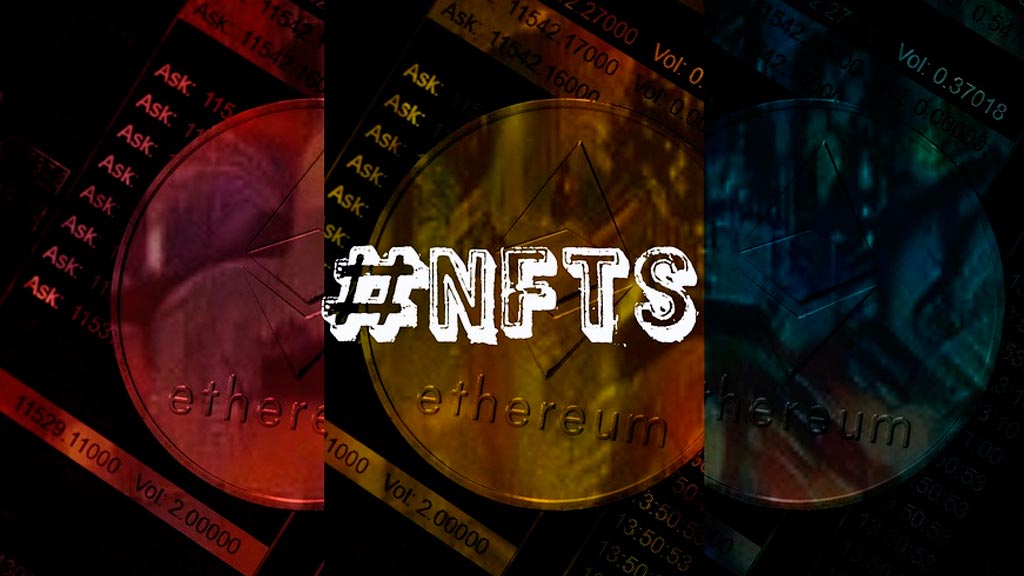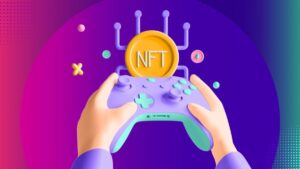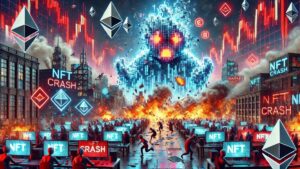NFTs (non-fungible tokens) took the cryptocurrency world by storm. Unlike the usual, fungible tokens, NFTs are far more than just digital assets designed to mimic real-world money. You can exchange BNB to USD but you can’t exchange one NFT token for another. These tokens are digital pieces of art.
In our 21st century, people have been seeking a way to protect their ownership of digital content because it can be easily duplicated a lot of times, depreciating the value of the piece. Digital art has become a whole new movement, becoming a missing piece of the conventional art world. The milestone was achieved by the most expensive NFT sold to date. That’s the “Everydays: the first 5000 days” artwork by a digital artist Beeple which was sold at Christie’s for $69.3 million.
So what’s the secret to the most pricey NFT ever? Let’s find out!
Digital art – what’s the catch?
Digital art has its roots way back in the 1980s when the first personal computers have started taking over the world. Besides AARON – a robotic painting device supervised by Harold Cohen, there were other ways in which people were inspired to create digital artworks.
Including famous Andy Warhol who was the pioneering artist to romanticize something non-unique and fungible like a can of Campbell’s soup, turning it into an outstanding signature of those times. Researchers also managed to find the unlabeled disks of Warhol. They have put a massive effort into decoding those because when the disk is old enough it is easy to damage it forever by simply trying to read what’s on it. So it turned out that those disks were carrying the first-ever digital art pieces made by Andy Warhol in different software programs. One of his efforts is also recorded on a videotape, when he was drawing the portrait of Debby Harry on an Amiga 1000 computer live during one of the luxury events.
So the idea of digital art is to use the modern means of creating unique art pieces. As a result, the picture, which is drawn with the help of a computer, exists in the form of a computer file. So, how do you claim ownership of something that doesn’t exist in the physical world but nevertheless is your intellectual property? That’s when NFTs become extremely helpful.
A growing number of objects that we use in our daily lives has only the digital equivalent. We read books on our smartphones, listen to music, watch videos, share pictures. It doesn’t even have to be something too difficult to make because one distinctive feature of the digital art is that it’s a fast art. You can share your immediate reaction to some burning issue and it might go viral and get loved by millions of people across the world.
For example, let’s take memes. It’s a new culture that flourished with the wide usage of the Internet and increased abilities of our mobile devices. One funny picture gets billions of shares for years ahead after its original posting online. But have you ever wondered who were the creators of those memes? Did they get enough appreciation? Probably, not all of them, not right now.
However, the situation is starting to change for the better. Let’s take the famous meme of a blonde toddler girl with a confused look called “side-eyeing Chloe”. The original picture, presumably taken by parents, was registered as NFT. Now, its worth is around $76,377.50.
Why NFTs are worth millions?
Let’s take a look at some of the most expensive NFTs right now. For reasons unknown, simple drawings called Crypto Punks look almost the same, yet they get more and more expensive. CryptoPunk #7523 — a blue-faced man in a mask, is worth $11.75 million. CryptoPunk #3100 — is yet another alien punk who wears a sporty headband and its current worth is $7.67 million. A CryptoPunk #7804 in cool shades, a cap, with a smoking pipe costs $7.6 million.
By the way, the famous Beeple who sold the most expensive NFT to date (his collage of the 13-year collection of everyday artworks for $69.3 million), also sold some of the other expensive NFTs. For example, his 10-second movie called “Crossroads” is depicting a large body with insults written all over it which lies on the ground like dead on a sunny day and people are passing by without noticing it. It was sold for $6.6 million.
So what are the reasons why NFTs are worth millions? There are a few most probable answers.
1 – These are collectible pieces.
Just like any rarity, those pieces are going to get more and more expensive each year. For example, the first tweet on Twitter made by Jack Dorsey or the original file of a Nyan Cat – these digital pieces have already become legends of our new age.
2 – Their value is determined by market and demand.
Beeple is a highly appreciated artist. He has millions of followers on social media. He is well-aware of the fact that the price tag that he puts on his NFT token might be high from the start, but it’s anyway going to jump even higher on the marketplace because of the demand and buyers’ competition.
3 – They determine the owner.
The official ownership of a digital file might be compared to the ownership of a physical property. Or the intellectual rights for a patent on something. The coolest thing is that the owner owns the license and they have the right to receive royalty rewards. It’s like when you bought the official rights for the “Thriller” song by Michael Jackson and every time someone uses a copy of it publicly with a desire to earn money on it (like a song remix or use in a film), they should pay royalties to you.










